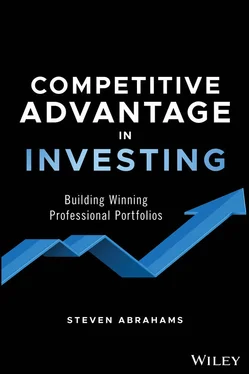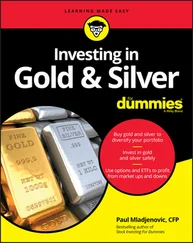1 Cover
2 Preface
3 Acknowledgments
4 Part I: Theory 1 Welcome, Harry MarkowitzIn the Beginning Choose Wisely All Cash Flow Includes Risk Risk Is the Mirror to Return The Surprising Power of Diversification The Sources of Risk and Correlation Markowitz's Open Questions 2 A Sharpe LineFinding a Place on the Efficient Frontier Traveling Along the Capital Market Line Putting a Price on Assets Along the Capital Market Line The Power of Leverage, the Price of Equity, the Value of a Good Manager A Theory that Changed Investing 3 The Counsel of CriticsPutting Theory to the Test A Problem with Alpha Performance Turns on More Than Beta Seeds of New Approaches 4 Toward a New Capital Asset Pricing ModelA New Focus on Leverage Limits to Leverage More Betting-Against-Beta A Natural Experiment Limits on More Than Leverage 5 The Local Capital Asset Pricing ModelShopping in the Neighborhood Local Markets for Investing Implications of Local Markets Appendix 6 Creating Competitive AdvantageConstrained Optimization 7 Building a Portfolio on Competitive AdvantageNavigating Future States of the World Return and Risk Goals Anticipating Future States of the World Choosing Among Feasible Investments Putting the Pieces Together From Theory to Application
5 Part II: Practice 8 Investing for Total Return: Mutual Funds The Structure of Mutual Fund Investing Constraints on Mutual Funds Role of Performance Benchmarks Role of the Investment Covenant Mutual Fund as Intermediary Sources of Comparative Advantage Predictions of Local CAPM Pursuit of Scale Narrower and Broader Benchmarks Investing Outside of Benchmarks Relative Value Investing The Quality and Cost of Capital Other Findings Conclusion 9 Investing for Total Return: Hedge Funds The Structure of Hedge Fund Investing A Relative Lack of Constraint on Hedge Fund Investing Role of Performance Benchmarks and Investment Covenants Peculiarities of Reported Hedge Fund Returns Publicly Traded Hedge Funds Sources of Comparative Advantage Predictions of Local CAPM The Formal Literature Conclusion 10 Investing for Banks, Thrifts, and Credit Unions The Structure of Bank Investing Basics of Disintermediation Duration of Equity Duration of Leverage Duration of Net Interest Income Other Forms of Equity The Unique Role of a Bank Investment Portfolio Sources of Comparative Advantage Predictions of Local CAPM Evidence for Local CAPM Differentiation Retail Rather Than Wholesale Funds Loans Rather Than Securities Low- and High-Quality Assets Short- Rather than Long-Maturity Assets Floating- Rather than Fixed-Rate Debt Conclusion Appendix: A Few Special Topics in Bank Balance Management—The Duration of Regulatory Leverage 11 Investing for Property/Casualty and Life Insurers The Structure of Insurance Investing The Basics of Insurance Sources of Comparative Advantage Predictions of Local CAPM Evidence of Local CAPM Conclusion 12 Investing for Broker/Dealers Broker Market Structure Revenues for Brokers The Volcker Rule The Role of Broker as Financial Intermediary Sources of Comparative Advantage Predictions of Local CAPM Informal Findings Conclusion 13 Investing for Real Estate Investment Trusts REIT Market Structure Sources of Comparative Advantage Predictions of Local CAPM Informal Evidence Conclusion 14 Investing for Sovereign Wealth Funds The Structure of Sovereign Wealth Funds The Challenges of Governance and Public Support The Issue of Government or Individual Control Sources of Comparative Advantage Predictions of Local CAPM Informal Evidence Conclusion 15 Investing for Individuals The Structure of Individual Investing Sources of Comparative Advantage Predictions of Local CAPM Informal Results Conclusion
6 Part III: Markets 16 Turning the Tables: Investor Impact on Asset Values The Yield Curve Conundrum European Demand for Highly Rated Assets The Effects of Quantitative Easing Bank Liquidity Rules Shift Investment Portfolio Holdings Other Cases The Competitive Portfolio Response
7 References
8 About the Author
9 Index
10 End User License Agreement
1 Chapter 6Table 6.1 Examples of portfolios with different amounts and types of leverageTable 6.2 The impact of shifting rates depends on leverageTable 6.3 Candidates for hedgingTable 6.4 Assets with sensitivity to different risks
2 Chapter 7Table 7.1 The level of a risk can take on a different value in each future st...Table 7.2 Examples of risk levels in hypothetical future states
3 Chapter 8Table 8.1 Rules for including securities in the Bloomberg Barclays US Aggrega...Table 8.2 Grinold and Kahn's estimate of information ratios across managersTable 8.3 The Bloomberg Barclays Aggregate US Credit Index is a subset of the...Table 8.4 Regressing a more diversified index such as the Bloomberg Barclays ...
4 Chapter 9Table 9.1 Corrections for survivor and backfill bias lower average hedge fund...Table 9.2 Hedge fund alpha and systematic beta estimates January 1995–2008Table 9.3 Fung-Hsieh seven-factor model January 1995–December 2009
5 Chapter 10Table 10.1 The aggregate US bank balance sheetTable 10.2 A stylized example of a bank balance sheetTable 10.3 Bank risk weights for selected assetsTable 10.4 Accounting classifications for fixed income securitiesTable 10.5 A range of US bank business models as of early 2019Table 10.6 A sample of bank balance sheetsTable 10.7 A simple bank balance sheet invested in mark-to-market securitiesTable 10.8 A simple bank balance sheet after a shift in rates
6 Chapter 11Table 11.1 Average insurer balance sheet (1999–2009)Table 11.2 A simple insurance exampleTable 11.3 Components of insurer risk-based capital, or RBCTable 11.4 Contributions to life insurer RBCTable 11.5 Asset risk requirementTable 11.6 RBC and target ROE lead to minimum acceptable asset yieldsTable 11.7 Asset accounting treatment
7 Chapter 12Table 12.1 Broker ROE shows aleveraged return to fixed income (2.51x) and a d...
8 Chapter 13Table 13.1 REITs have to meet asset, income, and ownership requirements
9 Chapter 14Table 14.1 The world's largest sovereign wealth funds in 2019
10 Chapter 16Table 16.1 Europe invested heavily in corporate debt and structured products ...
1 Chapter 1 Figure 1.1 Markowitz's approach leads to a limited combination of securities... Figure 1.2 The periodic returns on different assets can vary together, with ... Figure 1.3 Markowitz also showed that risk in a portfolio falls as the corre...
2 Chapter 2 Figure 2.1 In Markowitz's world, every risk-averse investor would make a dif... Figure 2.2 Borrowing and lending at the riskless rate allows any investor to... Figure 2.3 Steady investment in portfolios along the capital market line rai...
3 Chapter 3 Figure 3.1 On stock portfolios that vary in their beta, realized returns are...
4 Chapter 4 Figure 4.1 CAPM critically assumes unlimited leverage.
5 Chapter 5 Figure 5.1 Investors can operate, and assets can trade, in separate local ma... Figure 5.2 Local investors hold the market portfolio along local capital mar... Figure 5.3 The aggregate market portfolio is a simple average of local marke... Figure 5.4 Investors free to diversify outside local markets move along the ... Figure 5.5 The global capital market line is always steeper than local capit...
6 Chapter 8Figure 8.1 The market value of mutual funds since 1980 has grown at an annua...Figure 8.2 Independents and bank and insurer affiliates make up the 25 large...Figure 8.3 Diverse asset allocation in the largest US fixed income mutual fu...Figure 8.4 Alpha generated by the largest mutual funds benchmarked against t...Figure 8.5 Relationship between alpha and the deviation of fund asset alloca...
7 Chapter 9Figure 9.1 Rapid growth of assets under management at hedge funds.Figure 9.2 Growth in number of hedge funds and funds-of-funds has lagged gro...Figure 9.3 Hedge fund liquidations accelerated into the financial crisis, ex...Figure 9.4 A rising percentage of hedge funds have chosen public listings....Figure 9.5 Year-by-year hedge fund alpha and systematic beta returns 1998–20...
Читать дальше












